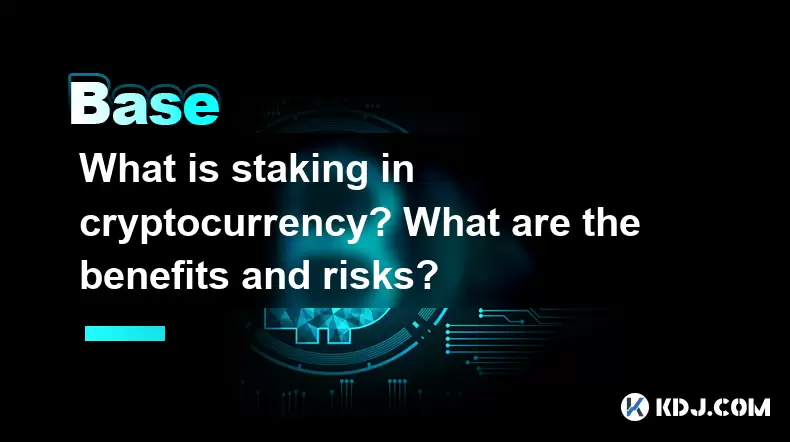-
 Bitcoin
Bitcoin $107,341.7259
0.15% -
 Ethereum
Ethereum $2,438.6204
0.70% -
 Tether USDt
Tether USDt $1.0003
-0.02% -
 XRP
XRP $2.1866
1.94% -
 BNB
BNB $649.0952
0.36% -
 Solana
Solana $150.9602
5.63% -
 USDC
USDC $0.9999
0.00% -
 TRON
TRON $0.2742
0.40% -
 Dogecoin
Dogecoin $0.1645
1.93% -
 Cardano
Cardano $0.5669
1.18% -
 Hyperliquid
Hyperliquid $37.8286
4.19% -
 Bitcoin Cash
Bitcoin Cash $491.4669
-2.74% -
 Sui
Sui $2.8150
3.06% -
 Chainlink
Chainlink $13.4184
2.91% -
 UNUS SED LEO
UNUS SED LEO $9.0809
0.27% -
 Avalanche
Avalanche $18.0295
2.60% -
 Stellar
Stellar $0.2396
1.19% -
 Toncoin
Toncoin $2.8587
0.13% -
 Shiba Inu
Shiba Inu $0.0...01160
2.59% -
 Litecoin
Litecoin $86.4192
1.45% -
 Hedera
Hedera $0.1486
1.19% -
 Monero
Monero $308.4324
0.87% -
 Polkadot
Polkadot $3.4202
1.43% -
 Bitget Token
Bitget Token $4.6436
-0.34% -
 Dai
Dai $0.9998
-0.02% -
 Ethena USDe
Ethena USDe $1.0002
0.00% -
 Uniswap
Uniswap $7.1527
3.29% -
 Pi
Pi $0.5357
-8.45% -
 Pepe
Pepe $0.0...09588
4.61% -
 Aave
Aave $259.9759
0.81%
Stablecoin Terminology Guide: Understand the Crypto Jargons Linked to Fiat Currency
Stablecoins, pegged to assets like fiat or gold, minimize crypto volatility, serving as trading tools, payment methods, and stable value storage.
May 09, 2025 at 09:50 pm

Stablecoin Terminology Guide: Understand the Crypto Jargons Linked to Fiat Currency
Stablecoins have become an integral part of the cryptocurrency ecosystem, providing a bridge between the volatile world of cryptocurrencies and traditional fiat currencies. As these digital assets gain popularity, understanding the terminology associated with them becomes crucial. This guide aims to demystify the jargon linked to stablecoins, offering a comprehensive overview of the key terms and concepts.
What is a Stablecoin?
A stablecoin is a type of cryptocurrency designed to minimize the volatility typically associated with other cryptocurrencies. Stablecoins are pegged to a stable asset, such as a fiat currency or a commodity like gold, to maintain a stable value. This pegging mechanism is what differentiates stablecoins from other cryptocurrencies like Bitcoin or Ethereum, which can experience significant price fluctuations.
Stablecoins serve multiple purposes within the crypto ecosystem. They are used for trading, as a means of payment, and as a way to store value without the high risk of volatility. By providing a stable value, stablecoins facilitate transactions and make it easier for users to move between different cryptocurrencies and traditional financial systems.
Types of Stablecoins
There are several types of stablecoins, each with its own method of maintaining stability. Understanding these types is essential for navigating the stablecoin landscape.
Fiat-Collateralized Stablecoins: These stablecoins are backed by fiat currencies like the US Dollar or Euro. For every stablecoin in circulation, there is an equivalent amount of fiat currency held in reserve. Examples include Tether (USDT) and USD Coin (USDC). The stability of these stablecoins depends on the issuer's ability to maintain the reserve and provide transparency about the reserve's holdings.
Crypto-Collateralized Stablecoins: These stablecoins are backed by other cryptocurrencies, such as Ethereum or Bitcoin. To maintain stability, these stablecoins require over-collateralization, meaning the value of the collateral must exceed the value of the stablecoins issued. Dai (DAI) is a prominent example of a crypto-collateralized stablecoin, which uses Ethereum as collateral.
Algorithmic Stablecoins: These stablecoins use algorithms to control the supply of the token in response to changes in demand, aiming to maintain a stable value without any collateral. These are often considered more experimental and carry higher risks due to their reliance on complex mechanisms. An example of an algorithmic stablecoin is Ampleforth (AMPL).
Commodity-Collateralized Stablecoins: These stablecoins are backed by physical commodities like gold or silver. The value of these stablecoins is tied to the value of the underlying commodity. Pax Gold (PAXG) is an example of a commodity-collateralized stablecoin, where each token represents one ounce of gold.
Pegging Mechanisms
The pegging mechanism is a critical aspect of stablecoins, as it determines how the stablecoin maintains its value relative to the asset it is pegged to. There are several methods used to achieve this pegging.
Collateralization: This involves holding a reserve of the asset to which the stablecoin is pegged. For fiat-collateralized stablecoins, this means holding an equivalent amount of fiat currency in reserve. For crypto-collateralized stablecoins, it involves holding a larger amount of cryptocurrency as collateral.
Rebasing: This is a mechanism used by some algorithmic stablecoins to adjust the supply of the token. When the price of the stablecoin deviates from its peg, the algorithm adjusts the number of tokens held by each user to bring the price back to the target value.
Seigniorage: This is another method used by algorithmic stablecoins, where the protocol issues new tokens or burns existing ones to manage the supply and maintain the peg. When the price is above the peg, new tokens are minted and sold, increasing the supply and lowering the price. When the price is below the peg, tokens are bought back and burned, reducing the supply and increasing the price.
Issuance and Redemption
The process of issuing and redeeming stablecoins is crucial for maintaining their stability and trust in the system. Here's how it typically works:
Issuance: When a user wants to acquire a stablecoin, they typically deposit the equivalent amount of the asset to which the stablecoin is pegged into a designated account or smart contract. In return, they receive an equivalent amount of stablecoins. For example, to get USDT, a user would deposit USD into Tether's reserve and receive USDT in their wallet.
Redemption: Conversely, when a user wants to convert their stablecoins back into the pegged asset, they send their stablecoins to the issuer, who then releases the equivalent amount of the asset from the reserve. For instance, to redeem USDT for USD, a user would send their USDT to Tether, which would then release the equivalent amount of USD from its reserve.
Regulatory Considerations
Stablecoins operate in a regulatory gray area, with different jurisdictions having varying approaches to their oversight. Understanding the regulatory landscape is important for both issuers and users of stablecoins.
Regulatory Compliance: Issuers of stablecoins must comply with various regulations, including anti-money laundering (AML) and know-your-customer (KYC) requirements. These regulations ensure that stablecoins are not used for illicit activities and that users' identities are verified.
Reserve Audits: To maintain trust and transparency, many stablecoin issuers conduct regular audits of their reserves. These audits verify that the issuer holds the necessary assets to back the stablecoins in circulation. For example, Tether publishes quarterly attestations of its reserves to reassure users.
Legal Status: The legal status of stablecoins varies by country. Some countries have embraced stablecoins as part of their financial infrastructure, while others have imposed strict regulations or outright bans. Users and issuers must stay informed about the legal status of stablecoins in their jurisdiction.
Use Cases of Stablecoins
Stablecoins have a wide range of applications within the cryptocurrency ecosystem and beyond. Here are some of the most common use cases:
Trading: Stablecoins are widely used in cryptocurrency trading as a way to quickly move between different cryptocurrencies without converting back to fiat currency. They provide a stable value that traders can rely on during volatile market conditions.
Remittances: Stablecoins offer a fast and cost-effective way to send money across borders. By using stablecoins, individuals can avoid the high fees and slow processing times associated with traditional remittance services.
Payments: Many businesses and merchants accept stablecoins as a form of payment. Since stablecoins maintain a stable value, they are more suitable for everyday transactions than highly volatile cryptocurrencies.
Store of Value: For individuals looking to store value without the risk of volatility, stablecoins provide a safer alternative to other cryptocurrencies. They can be held in digital wallets and easily converted back into fiat currency when needed.
Frequently Asked Questions
Q: How do stablecoins maintain their peg to fiat currency?
A: Stablecoins maintain their peg through various mechanisms, such as collateralization, rebasing, and seigniorage. Fiat-collateralized stablecoins hold reserves of the fiat currency to which they are pegged, while algorithmic stablecoins use supply adjustments to maintain the peg.
Q: Are stablecoins regulated?
A: The regulation of stablecoins varies by jurisdiction. Some countries have specific regulations in place for stablecoins, while others are still developing their regulatory frameworks. Issuers of stablecoins must comply with AML and KYC requirements, and many conduct regular audits of their reserves to maintain transparency.
Q: Can I use stablecoins for everyday purchases?
A: Yes, many businesses and merchants accept stablecoins as a form of payment. Since stablecoins maintain a stable value, they are suitable for everyday transactions. However, acceptance may vary depending on the specific stablecoin and the region.
Q: What happens if a stablecoin loses its peg?
A: If a stablecoin loses its peg, it can result in a loss of confidence among users and potential devaluation of the stablecoin. In such cases, the issuer may take measures to restore the peg, such as adjusting the supply of the stablecoin or providing additional collateral. Users should monitor the stability of the stablecoin and consider the risks involved.
Disclaimer:info@kdj.com
The information provided is not trading advice. kdj.com does not assume any responsibility for any investments made based on the information provided in this article. Cryptocurrencies are highly volatile and it is highly recommended that you invest with caution after thorough research!
If you believe that the content used on this website infringes your copyright, please contact us immediately (info@kdj.com) and we will delete it promptly.
- XRP, Ripple, and Bitcoin: Decoding the Latest Crypto Moves
- 2025-06-29 08:30:13
- NBA Legend Scottie Pippen's Crypto Picks: SHIB and XRP in the Spotlight
- 2025-06-29 08:50:12
- Bitcoin, US Strategy, and Cryptocurrency Regulation: Navigating the Digital Frontier
- 2025-06-29 09:10:13
- Chainlink's $17 Breakout: Bullish Momentum Fueled by Mastercard Partnership
- 2025-06-29 08:30:13
- Crypto Launches Q3 2025: Top Picks to Watch
- 2025-06-29 09:10:13
- BTC Bull Token: Riding Bitcoin's Bull Run to Crypto Glory
- 2025-06-29 09:30:11
Related knowledge

What is an oracle in blockchain? How to ensure data authenticity?
Jun 19,2025 at 08:49pm
Understanding the Role of an Oracle in BlockchainIn the context of blockchain technology, an oracle serves as a bridge between the blockchain and external data sources. While blockchains are inherently secure and decentralized, they cannot access real-world information on their own. Oracles enable smart contracts to interact with off-chain data such as ...

What are ICOs and IDOs in cryptocurrency? How to identify high-quality projects?
Jun 22,2025 at 11:49am
Understanding ICOs in CryptocurrencyInitial Coin Offerings (ICOs) are fundraising mechanisms used by cryptocurrency startups to raise capital for their projects. In an ICO, a company creates and sells its own tokens to investors in exchange for established cryptocurrencies like Bitcoin or Ethereum. The process typically involves the release of a whitepa...

What is the core concept of Web3.0? How is it different from Web2.0?
Jun 21,2025 at 05:56pm
Decentralization as the Foundation of Web3.0The core concept of Web3.0 revolves around decentralization, which fundamentally challenges the centralized architecture of Web2.0. In Web3.0, control and ownership are distributed across a network rather than being held by a central authority or corporation. This is achieved primarily through blockchain techn...

What is blockchain gaming (GameFi)? How to make money while playing?
Jun 20,2025 at 07:56am
Understanding Blockchain Gaming (GameFi)Blockchain gaming, often referred to as GameFi, is a fusion of blockchain technology and video games. It enables players to own in-game assets through non-fungible tokens (NFTs) and earn rewards via cryptocurrencies or token-based systems. Unlike traditional games where items are controlled by centralized develope...

What is staking in cryptocurrency? What are the benefits and risks?
Jun 22,2025 at 10:01am
Understanding the Concept of Staking in CryptocurrencyStaking in cryptocurrency refers to the process of actively participating in transaction validation on a blockchain network that uses a Proof-of-Stake (PoS) consensus mechanism. Instead of miners competing to solve complex mathematical puzzles as in Proof-of-Work systems like Bitcoin, PoS blockchains...

How does the Lightning Network solve Bitcoin congestion? What is the usage process?
Jun 23,2025 at 06:21pm
Understanding Bitcoin Network CongestionBitcoin, as a decentralized digital currency, operates on a blockchain that records every transaction in a public ledger. Each block has a limited size, typically 1 megabyte, which allows for only a certain number of transactions per second (TPS). When the number of transactions increases, the network becomes cong...

What is an oracle in blockchain? How to ensure data authenticity?
Jun 19,2025 at 08:49pm
Understanding the Role of an Oracle in BlockchainIn the context of blockchain technology, an oracle serves as a bridge between the blockchain and external data sources. While blockchains are inherently secure and decentralized, they cannot access real-world information on their own. Oracles enable smart contracts to interact with off-chain data such as ...

What are ICOs and IDOs in cryptocurrency? How to identify high-quality projects?
Jun 22,2025 at 11:49am
Understanding ICOs in CryptocurrencyInitial Coin Offerings (ICOs) are fundraising mechanisms used by cryptocurrency startups to raise capital for their projects. In an ICO, a company creates and sells its own tokens to investors in exchange for established cryptocurrencies like Bitcoin or Ethereum. The process typically involves the release of a whitepa...

What is the core concept of Web3.0? How is it different from Web2.0?
Jun 21,2025 at 05:56pm
Decentralization as the Foundation of Web3.0The core concept of Web3.0 revolves around decentralization, which fundamentally challenges the centralized architecture of Web2.0. In Web3.0, control and ownership are distributed across a network rather than being held by a central authority or corporation. This is achieved primarily through blockchain techn...

What is blockchain gaming (GameFi)? How to make money while playing?
Jun 20,2025 at 07:56am
Understanding Blockchain Gaming (GameFi)Blockchain gaming, often referred to as GameFi, is a fusion of blockchain technology and video games. It enables players to own in-game assets through non-fungible tokens (NFTs) and earn rewards via cryptocurrencies or token-based systems. Unlike traditional games where items are controlled by centralized develope...

What is staking in cryptocurrency? What are the benefits and risks?
Jun 22,2025 at 10:01am
Understanding the Concept of Staking in CryptocurrencyStaking in cryptocurrency refers to the process of actively participating in transaction validation on a blockchain network that uses a Proof-of-Stake (PoS) consensus mechanism. Instead of miners competing to solve complex mathematical puzzles as in Proof-of-Work systems like Bitcoin, PoS blockchains...

How does the Lightning Network solve Bitcoin congestion? What is the usage process?
Jun 23,2025 at 06:21pm
Understanding Bitcoin Network CongestionBitcoin, as a decentralized digital currency, operates on a blockchain that records every transaction in a public ledger. Each block has a limited size, typically 1 megabyte, which allows for only a certain number of transactions per second (TPS). When the number of transactions increases, the network becomes cong...
See all articles

























































































